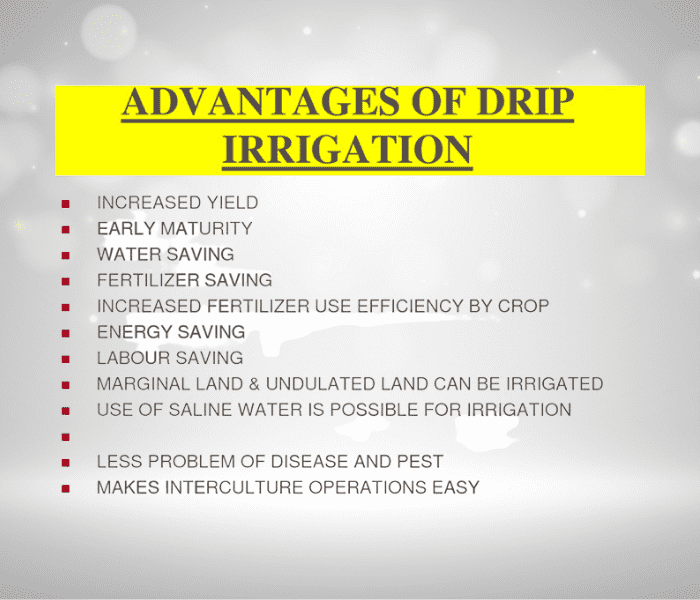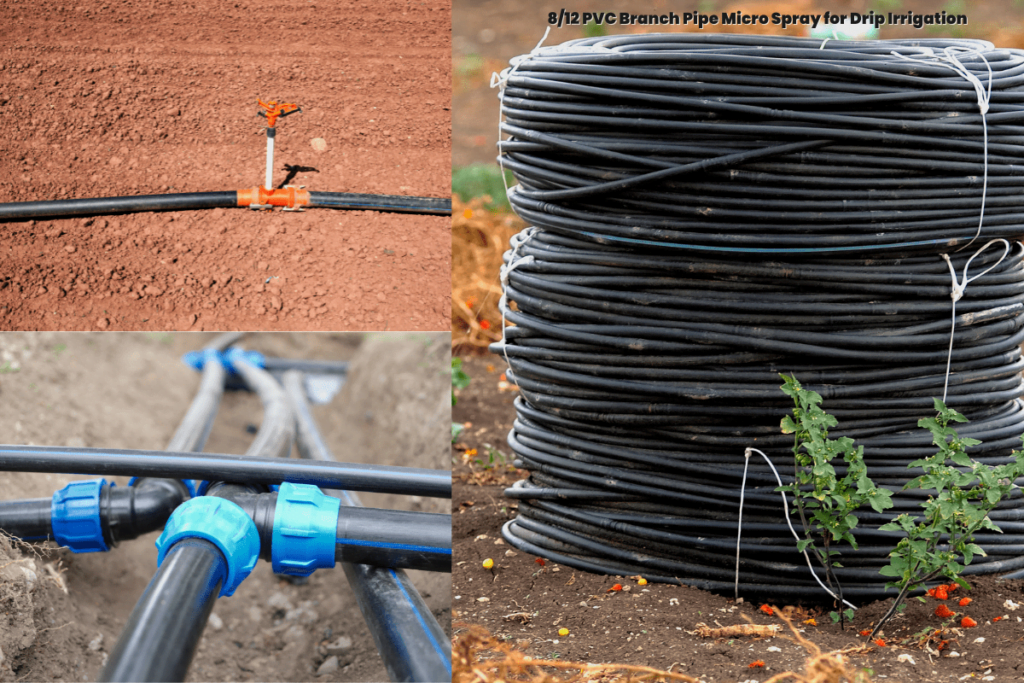Easy DIY Drip Irrigation: Step-by-Step Guide
DIY Drip irrigation is a highly efficient and water-saving method of watering plants in your garden or landscape. By delivering water directly to the root zone of plants, it minimizes water waste and ensures that plants receive the precise amount of water they need for healthy growth. In this step-by-step tutorial, we will guide you through the process of setting up your own drip irrigation system, allowing you to save time, conserve water, and maintain a thriving garden.
Table of Contents
Introduction to DIY drip irrigation
DIY Drip irrigation is a method of irrigation that involves the slow and controlled application of water directly to the root zone of plants. Unlike traditional overhead sprinkler systems, which can result in water loss through evaporation and runoff, drip irrigation delivers water efficiently and precisely, minimizing waste and maximizing plant health.
Benefits of drip irrigation
Drip irrigation offers numerous benefits for both gardeners and plants. Some key advantages include:
Water efficiency:
Drip irrigation uses water more efficiently than other irrigation methods, reducing water waste and promoting conservation.
Targeted watering:
Water is delivered directly to the root zone of plants, minimizing water loss due to evaporation and ensuring that plants receive the right amount of water.
Reduced weed growth:
By delivering water only where it’s needed, drip irrigation helps prevent weed growth in areas between plants.
Disease prevention:
Drip irrigation keeps foliage dry, reducing the risk of plant diseases caused by wet leaves.
Time savings:
Once set up, drip irrigation systems require less maintenance and manual effort compared to hand watering or sprinkler systems.
Pros and Cons of DIY Drip Irrigation
| Pros | Cons |
|---|---|
| Efficient water usage | Initial setup can be time-consuming. |
| Customizable to specific plant needs | Requires regular maintenance and monitoring |
| Reduces water waste | Potential for clogging or leakage in the system |
| Saves time and effort in watering | The Initial cost of materials and equipment |
| Promotes healthier plant growth | Requires knowledge of system design and setup |


DIY Drip Irrigation: Step-by-Step
Assess your garden’s needs:
Determine the specific water requirements of your plants, including their spacing and size. This will help you determine the number and placement of drip emitters.
Create a layout:
Sketch a garden diagram indicating the location of plants, water source, and main line. Plan the tubing route, ensuring efficient water distribution and minimal pressure loss.
Choose the correct components:
Select drip emitters, tubing, connectors, and other necessary components based on your garden’s layout and water requirements. Ensure compatibility and durability of the chosen components.
Install the system:
Start by connecting the main line to the water source, then lay out the tubing, placing drip emitters at appropriate intervals. Secure all connections and thoroughly test to check for leaks or issues.
Monitor and adjust:
Inspect the system for leaks, clogs, or uneven water distribution. Adjust as needed to ensure all plants receive adequate water. Check the emitters for clogs, observe the water distribution pattern, and modify the flow rate if necessary.
Testing and adjusting the system:
Once the system is connected, turn on the water supply and observe the performance of the drip emitters. Adjust the water flow or emitter positions to ensure even watering throughout the garden.
Maintaining your drip irrigation system:
Regular maintenance is essential for the longevity and effectiveness of your drip irrigation system. Some maintenance tasks include inspecting and cleaning filters, checking for leaks, and replacing damaged emitters or tubing.
Troubleshooting common issues:
Drip irrigation systems occasionally need help with problems despite their efficiency. Some common issues include clogged emitters, leaks, and uneven water distribution. This section will provide troubleshooting tips and solutions to address these challenges.
Drip irrigation system components Equipment
The components of a drip irrigation system include:
- Tubing
- Emitters (such as drippers or sprayers)
- Connectors
- Caps
- Pressure regulators (if needed)
- Timers (optional)
- Stakes or clips for securing the tubing
- Water source (such as a garden hose)
Tips for maximizing the effectiveness of your drip irrigation system
- Mulch around plants to reduce evaporation and weed growth.
- Schedule irrigation during the early morning or late evening to minimize water loss due to evaporation.
- Regularly monitor plant health and adjust watering schedules as needed.
- Conduct periodic inspections of the system to identify and address any issues promptly.
Drip irrigation vs soaker hose: which is better?
The choice between drip irrigation and a soaker hose depends on factors such as the specific needs of your garden and personal preferences. Drip irrigation offers precise and targeted watering, ideal for individual plants, while a soaker hose provides even and gentle watering along a larger area. Consider factors like plant types, water requirements, and garden layout to determine which option is better suited for your needs.
DIY drip irrigation for small gardens
Use a compact drip irrigation kit with adjustable emitters for DIY drip irrigation in small gardens. Lay out the main tubing along the planting areas, insert emitters near each plant, and secure the tubing with stakes or clips. Regularly monitor and adjust the system to meet the specific water needs of your plants.
DIY Drip irrigation for container plants
Drip irrigation can be used for container plants by inserting emitters directly into the soil or using a drip system designed specifically for containers. Ensure proper spacing of emitters, monitor soil moisture levels, and adjust watering frequency based on the specific needs of the container plants.
DIY drip irrigation for flower beds

For DIY drip irrigation in flower beds, lay out the main tubing along the bed’s length, position emitters near each plant, and secure the tubing with stakes. Adjust the system as flowers grow, monitor moisture levels, and enjoy efficient and targeted watering for your flower beds.
Drip System Maintenance
To maintain a drip irrigation system, regularly check for leaks or clogs in the tubing, clean or replace emitters as needed, monitor water pressure, and adjust the system to accommodate plant growth. Additionally, flush the system periodically, inspect filters for debris, and ensure proper drainage to prevent waterlogging and root rot.
Troubleshooting
When troubleshooting, identify the issue by observing the symptoms, examine the affected components for damage or malfunction, and systematically check for possible causes such as clogs, leaks, or electrical problems. Then, take appropriate steps to resolve the issue, including cleaning or replacing parts, adjusting settings, or seeking professional assistance.
Conclusion
By following this step-by-step tutorial, you can successfully create your own DIY drip irrigation system. With its water-saving benefits and targeted watering approach, drip irrigation offers an efficient and environmentally friendly way to maintain a healthy garden or landscape. Enjoy the convenience and effectiveness of this system while conserving water resources.
Get your 8/12 PVC Branch Pipe Micro Spray for Drip Irrigation, Garden Irrigation, and more at Agricomplex. Don’t wait, shop now!
DIY Drip Irrigation

Want to purchase Drip Irrigation accessories? Visit our Agricomplex website to explore our wide range of irrigation products.
Frequently Asked Questions (FAQ’s)
How much water does a drip irrigation system save compared to traditional sprinklers?
A drip irrigation system can save up to 50% or more water than traditional sprinkler systems. Delivering water directly to the plant roots, it minimizes evaporation and runoff.
Can I install a drip irrigation system myself, or should I hire a professional?
Drip irrigation systems are generally DIY-friendly and can be installed by homeowners. However, consulting a professional for guidance might be beneficial if you have a large or complex landscape.
Can I use a drip irrigation system for all types of plan?
Drip irrigation is suitable for a wide range of plants, including flowers, vegetables, shrubs, and trees. By customizing the system to meet the specific needs of each plant, you can ensure optimal growth and water efficiency.
How often should I water with a drip irrigation system?
The frequency of watering will depend on various factors such as plant type, weather conditions, and soil moisture levels. Monitor your plants regularly and adjust the watering schedule as needed to avoid over or under-watering.
Can I expand my drip irrigation system in the future?
Yes, one of the advantages of drip irrigation systems is their scalability. You can easily expand the system by adding additional emitters, tubing, or zones to accommodate new planting areas.
Related Articles
People Also Asked
Can I install drip irrigation in my garden?
Yes, drip irrigation can be installed in various sizes and types of gardens. It is particularly well-suited for vegetable gardens, flower beds, shrub borders, and container gardens.
Can I use drip irrigation for potted plants?
Yes, drip irrigation can be used for potted plants. It effectively provides water directly to the root zone of potted plants, promoting efficient water usage and healthy growth
How do I design a drip irrigation system?
To design a drip irrigation system, follow these steps:
Assess your garden or landscape and determine the areas that require irrigation.
Consider the water requirements of different plants and group them accordingly.
How long should I run a drip irrigation system?
The duration of a drip irrigation system depends on factors such as plant water requirements, soil type, and weather conditions. It is recommended to run the system long enough to moisten the root zone without causing waterlogging, typically for shorter durations and more frequent intervals.
How do I maintain a DIY drip irrigation system?
Regularly check for leaks, clogs, or damaged components to maintain a DIY drip irrigation system. Clean or replace emitters as needed to ensure consistent water flow and adjust watering schedules based on seasonal changes and plant requirements




